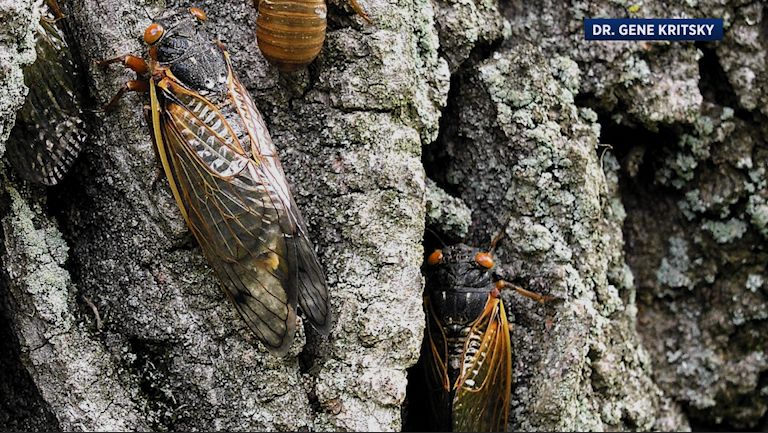Unseasonably cool air and several rounds of frost won’t kill cicadas, but it will delay their arrival in Ohio!
If you were hoping that the chilly weather would remove some of these noisy insects, think again.
Typically, the 17-year cicadas will emerge by mid-May, beginning in southern Ohio then throughout the state in the weeks to follow.
Due to the recent early May chill, our soil temperatures haven’t been able to warm enough for the cicadas to emerge fully and thus delaying them a bit.
According to Dr. Gene Kritsky, the Dean of Behavioral and Natural Sciences at Mount St. Joseph University in Cincinnati, the magic number is 64.

Once the soil temperatures reach 64 degrees, the majority of the cicadas will arrive.
The weather pattern cicadas need to emerge is a combination of soaking rain and warmer soil temperatures. We’ve already had a wet start to May. Now we are waiting for those warmer temperatures.
Once we hit the 70s and 80s, that’ll be enough to start making them pop out.
To estimate soil temperature, take the average temperatures from the highs and lows for three consecutive days.
Once you calculate the average temperature of each day, total those three days up and divide it by three. You’ll now have an estimate for soil temperature.
For example, one of the first cities to see cicadas emerge is Cincinnati. We took the average temperature from the highs and lows from the past week, added those three numbers together and divided them by three.
Currently, Cincinnati’s estimated soil temperature is 53.2 degrees.
Some cicadas will appear before then and have already been spotted, especially in western and southern parts of the state. Typically, the mass emergence happens in mid-May, but the cool start will delay it by a few weeks.
So, we will likely have to wait for temperatures to rise and warm the ground soil. Our magic number is 64 degrees!
Calculating the soil temperature and waiting for nature is a great learning opportunity for families and their kids!
Remember, the cicadas may seem annoying, but they are harmless and essential for our environment and can be fascinating.
You can track the cicadas in your area by downloading the Cicada Safari app. You can also submit your sightings or see nearby reports.
Be prepared for Brood X cicadas. Here are three things to know before cicadas emerge.



)